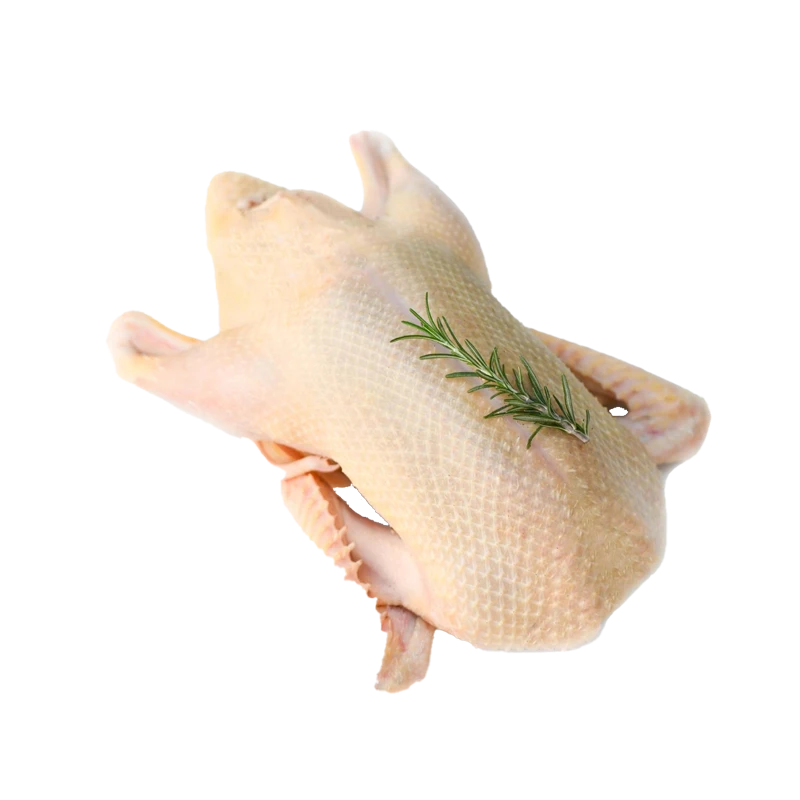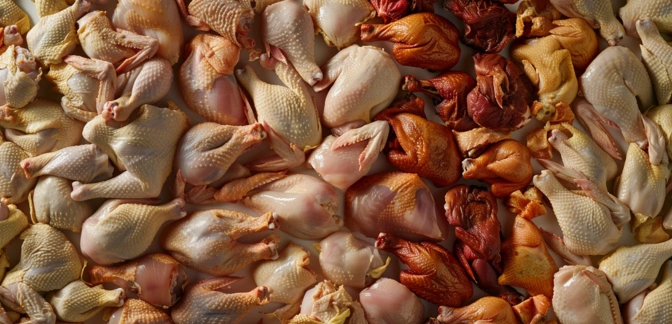Chicken — Nutrients, Health Benefits, And Shopping Tips

Written by Listonic Team
Last update on September 4, 2024
Nutrients
Nutrition facts
Amount per 100 g
Calories
🔥 239 kcal
| Nutrition per: 100 g | Value | % Daily Value* |
|---|---|---|
| Carbs | 0 g | - |
| Fiber | 0 g | - |
| Sugars | 0 g | - |
| Glycemic Index | 0 | - |
| Protein | 27 g | 54% |
| Sodium | 82 mg | 3.57% |
| Total Fat | 14 g | 17.95% |
*The % of Daily Value (DV) tells you how much a nutrient in a serving of food contributes to a daily diet. 2,000 calories a day is used for general nutrition advice.
27 g
💪 High Protein Content
Key takeaways
Health benefits
- High in protein, essential for muscle growth, repair, and overall body function.
- Contains essential vitamins and minerals such as B vitamins, selenium, and phosphorus, which support energy metabolism, immune function, and overall health.
- Low in fat when skinless, making it a lean source of protein.
- Versatile in cooking, offering various ways to prepare and incorporate into meals.
- Supports weight management by providing a high-protein, low-calorie option.
Health risks
- Risk of contamination with harmful bacteria such as Salmonella or Campylobacter, especially if the chicken is not properly cooked to a safe internal temperature.
- High cholesterol content in certain cuts, particularly with the skin, which can contribute to increased cholesterol levels and heart disease if consumed frequently.
- Potential for antibiotic resistance due to the use of antibiotics in poultry farming, which can affect the effectiveness of antibiotics in humans.
- Risk of foodborne illness if chicken is not properly stored, handled, or cooked, leading to potential food poisoning.
How to choose chicken
Select chicken with a clean smell and a firm texture. The skin should be pale yellow without any discoloration. Chicken should feel cold to the touch and be stored at a proper refrigeration temperature to ensure freshness.
Avoid chicken that has a sticky texture or any off odors, as these are indicators of spoilage. Ensure the packaging is intact and does not show any signs of damage, which can affect the chicken's quality.

How to store chicken
Refrigeration is essential for fresh chicken, which should be used within a couple of days. Keep it in its original packaging or an airtight container. Freezing is an option for longer storage, up to six months.
Room temperature can promote bacterial growth, making the chicken unsafe. Avoid refreezing once thawed, as it can affect texture and taste. Always use clean utensils and surfaces to prevent contamination.
✅ Extra Tip
How long does it last?
Chicken can last for 1-2 days in the refrigerator. For longer storage, chicken can be frozen for up to 9 months. Proper packaging, such as vacuum-sealing, helps maintain its quality over longer storage periods.
What to do with leftovers?
Leftover chicken can be used in a variety of dishes. Shred it and add to salads, wraps, or sandwiches for a quick and easy meal, or mix it into a pasta dish with a creamy sauce. Chicken is also great in soups, stews, or casseroles, where it adds protein and flavor.
Use chicken in a stir-fry with vegetables and rice, or toss it with barbecue sauce for a pulled chicken sandwich. If you have a lot of chicken, consider making a batch of chicken enchiladas or using it in a chicken and rice casserole. Chicken can also be chopped and added to a quiche or frittata for a savory breakfast or brunch. For a quick snack, try mixing shredded chicken with buffalo sauce and serving it with celery sticks and blue cheese dressing.
👨⚕️️ Medical disclaimer
Discover products from other categories
Listonic Team
Fact-checked
Our editorial team checked this article to make sure it was accurate at the time of publishing it.
Get the top-rated shopping list app on your phone!







